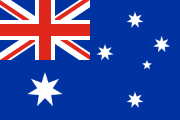

Celebrating Differences
Check out the resources below that can help teach your child about kindness, empathy and belonging.
Conversations about kindness start here
We know little kids can have big questions about differences and similarities they notice in their world. Here are examples of questions you may hear and how you could respond using a simple, three-step, research-based framework: Acknowledge & Observe, Explain and Celebrate!
Overview & Breakdown
Why is their skin different from mine?
Why is that person in a wheelchair?
Why do they talk differently than we do?
Why does that person look different?
Why can't they see/hear/talk like we do?
Why does my friend's family look different from mine?
Easy Toy Room Tips
Simple Ways to Customize & Keep Talking
.jpg)
Caregiver & educator resources
Tips and support from our experts to spark curiosity, celebrate uniqueness and nurture self-confidence.


.jpg)
Stories & songs for children
Perfect for 1-to-5 year-olds

Tools to introduce kids to the world around them






















.jpg)



.jpg)























